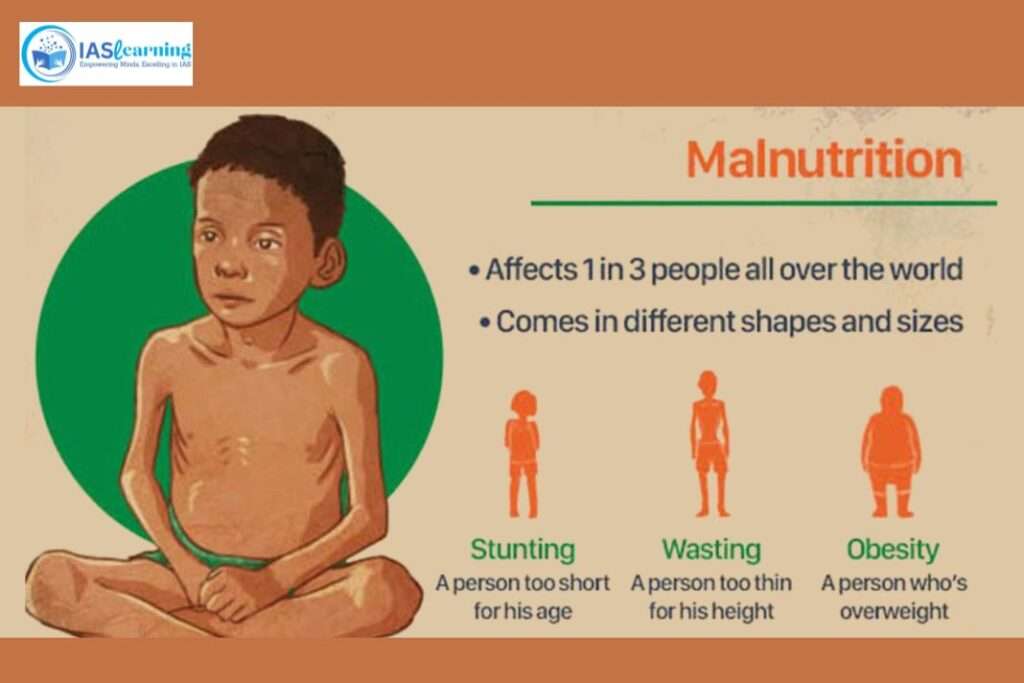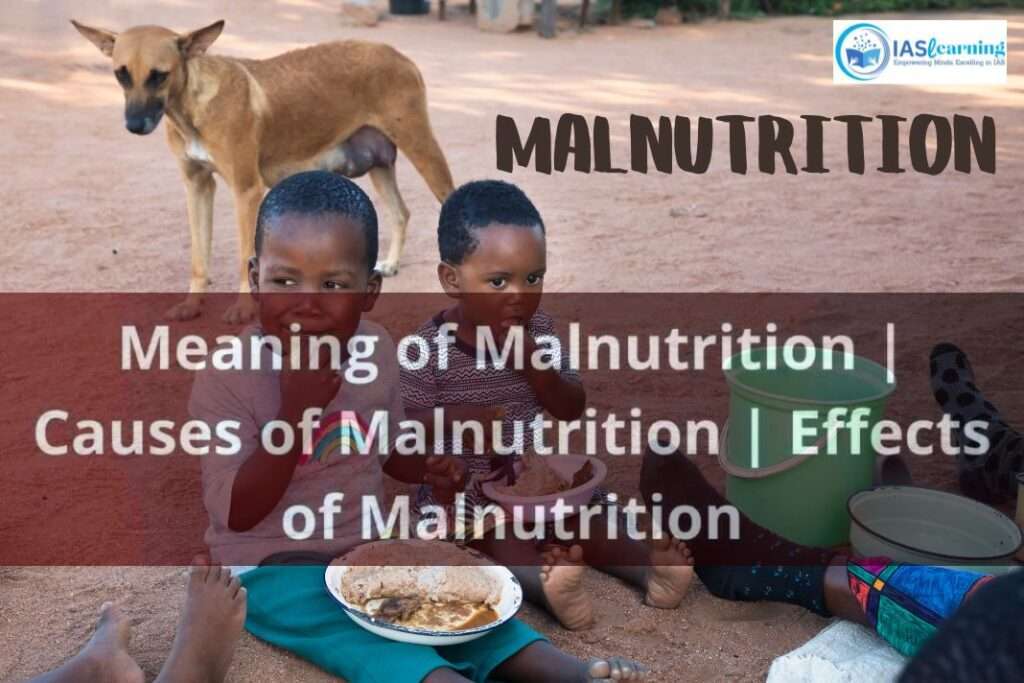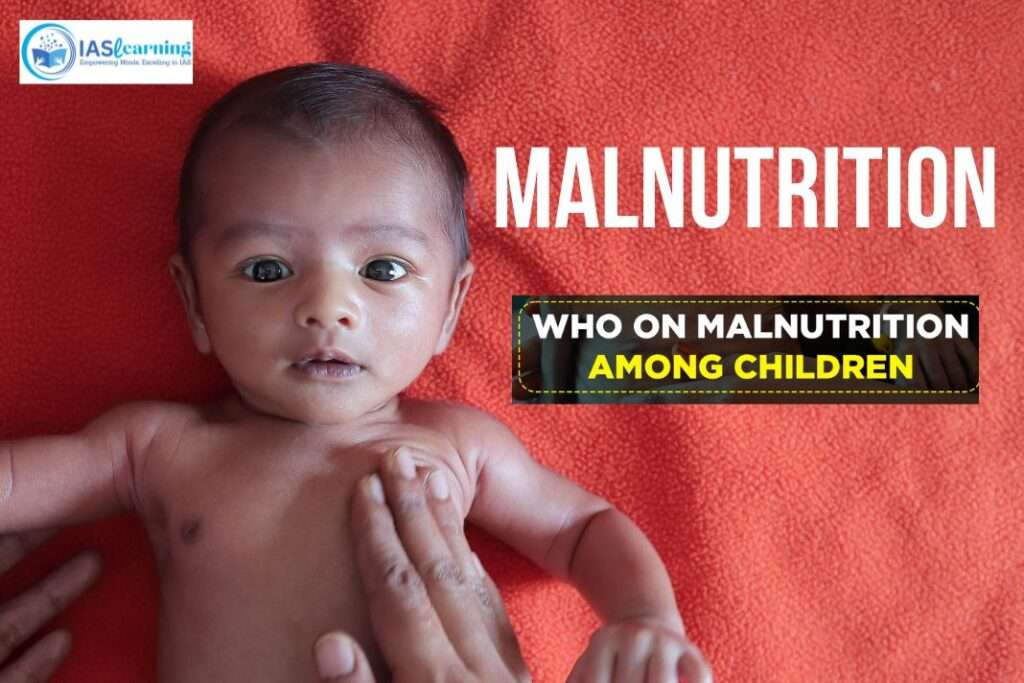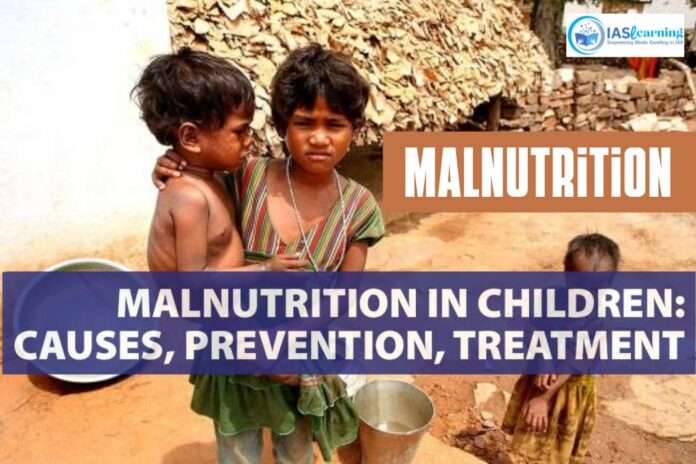Table of Contents
Introduction
It is a global health issue that affects millions of people, especially in developing countries. In this comprehensive article, we will delve into the various aspects of malnutrition, from its causes and consequences to potential solutions. Join us on this journey to gain a deeper understanding of this critical problem.
What Is Malnutrition?
It is a health condition characterized by an imbalance in the intake of essential nutrients required for proper growth and maintenance of the body. It occurs when an individual’s diet lacks the necessary vitamins, minerals, proteins, and other vital nutrients, or when there is an excessive intake of unhealthy or imbalanced foods. Malnutrition can manifest in various forms, including undernutrition and overnutrition.

Types of Malnutrition
- Undernutrition: Undernutrition occurs when an individual’s diet lacks the necessary calories and essential nutrients required for optimal growth and health. This form of malnutrition is often associated with a deficiency in protein, vitamins, and minerals. Undernutrition can take several subtypes, including:
- Protein-Energy Malnutrition (PEM): This is one of the most common forms of undernutrition. It results from insufficient intake of both calories and protein, leading to symptoms like stunted growth, muscle wasting, and weakness.
- Micronutrient Deficiencies: This includes deficiencies in specific vitamins and minerals like vitamin A, iron, iodine, and zinc. These deficiencies can lead to conditions such as night blindness, anemia, and impaired cognitive development.
- Stunting: Stunting is a condition where a child’s height growth is significantly below the average for their age. It is a common consequence of chronic undernutrition in early childhood.
- Wasting: Wasting refers to a significant loss of muscle and fat tissue, resulting in a low body weight for height. It is often associated with acute malnutrition.
- Overnutrition: Overnutrition occurs when there is an excessive intake of calories and nutrients, often from an imbalanced or unhealthy diet. This can lead to obesity and related health problems, including:
- Obesity: Overnutrition is a leading cause of obesity, a condition characterized by excessive body fat accumulation. Obesity increases the risk of numerous health issues, including heart disease, diabetes, and certain types of cancer.
- Metabolic Disorders: Overnutrition can disrupt the body’s metabolic processes, leading to conditions like insulin resistance and metabolic syndrome.
- Cardiovascular Problems: Excess calorie intake, especially from high-fat and high-sugar foods, can contribute to heart disease and hypertension
Causes

- Inadequate Diet: Insufficient intake of calories and essential nutrients due to a diet lacking in diversity is a significant contributor to malnutrition. People who rely on monotonous or low-quality diets are at a higher risk.
- Poverty: Poverty is a major underlying cause of malnutrition. Low-income individuals and families often struggle to afford or access nutritious foods, making them more susceptible to malnutrition.
- Lack of Education: Limited knowledge about proper nutrition and dietary practices can lead to poor food choices. Inadequate education on nutrition can result in the consumption of unhealthy and unbalanced diets.
- Food Insecurity: People in regions with food insecurity may not have consistent access to an adequate food supply. This can lead to inconsistent or insufficient meals, contributing to malnutrition.
- Health Conditions: Certain medical conditions, such as digestive disorders, food allergies, and chronic illnesses, can hinder the absorption of nutrients from food, leading to malnutrition.
- Environmental Factors: Environmental factors like droughts, floods, and crop failures can disrupt food production and availability, impacting the nutritional intake of communities.
- Limited Access to Clean Water and Sanitation: Poor access to clean water and sanitation facilities can lead to gastrointestinal infections, which can further exacerbate malnutrition by impairing nutrient absorption.
- Cultural and Dietary Practices: Cultural beliefs and dietary customs can influence food choices and meal patterns. Some practices may not provide a balanced intake of essential nutrients.
- Conflict and Displacement: Armed conflicts and forced displacement can disrupt food distribution systems and limit access to nutritious foods for affected populations.
- Gender Inequality: In many societies, gender disparities in access to resources and decision-making can affect women’s and children’s nutritional status, leading to higher rates of malnutrition among these groups.
Consequences

Malnutrition can have far-reaching consequences that impact an individual’s health, well-being, and overall quality of life. These consequences can vary in severity and may include:
- Health Implications:
- Stunted Growth: Malnutrition, particularly in childhood, can lead to impaired physical growth and development. Children who experience chronic undernutrition may be shorter than their peers.
- Weakened Immune System: Malnutrition compromises the body’s ability to fight infections and diseases, making individuals more susceptible to illnesses.
- Anemia: A common consequence of malnutrition is a deficiency in essential nutrients like iron, leading to anemia. Anemic individuals often experience fatigue and weakness.
- Cognitive Impairments: Malnutrition, especially during critical periods of brain development in early childhood, can result in cognitive deficits, affecting learning and intellectual abilities.
- Delayed Wound Healing: Malnourished individuals may experience slower wound healing, making them more vulnerable to infections and complications.
- Increased Mortality: Severe malnutrition, if left untreated, can lead to a higher risk of mortality, particularly among children and the elderly.
- Economic Impact:
- Malnutrition can reduce productivity and economic potential. Malnourished individuals are often unable to perform at their full capacity, which can have negative implications for the workforce and the overall economy of a region.
- Social Ramifications:
- Malnutrition can perpetuate the cycle of poverty and inequality. Children who experience malnutrition are more likely to face educational challenges and may struggle to break the cycle of poverty as adults.
- It can also lead to social stigmatization, as individuals may be marginalized or discriminated against due to their physical appearance or health status.
- Long-Term Health Issues:
- Malnutrition during childhood can have long-term health consequences, increasing the risk of chronic diseases in adulthood, such as diabetes, heart disease, and hypertension.
- Impact on Maternal Health:
- Malnutrition in pregnant women can lead to adverse outcomes for both the mother and the developing fetus, including preterm birth and low birth weight.
- Public Health Burden:
- Malnutrition imposes a significant burden on healthcare systems, as it leads to increased hospitalizations, medical treatments, and healthcare costs.
How to Combat?

Combating malnutrition is a complex challenge that requires a multi-faceted approach involving governments, communities, and various stakeholders. Here are some key strategies and initiatives to address and combat malnutrition:
- Nutritional Education:
- Promote nutritional education and awareness programs to empower individuals and communities with knowledge about balanced diets, food choices, and the importance of essential nutrients.
- Food Assistance Programs:
- Establish government-led or NGO-run food assistance programs to provide nutritious meals to vulnerable populations, including low-income families, pregnant women, and children.
- Agricultural Development:
- Invest in agricultural development to increase the availability of nutritious food in underserved areas. Support small-scale farmers and promote sustainable agriculture practices.
- Fortification of Food:
- Encourage the fortification of staple foods with essential vitamins and minerals. This can help address micronutrient deficiencies in populations with limited dietary diversity.
- Breastfeeding Promotion:
- Promote and support breastfeeding as it provides essential nutrients to infants and helps prevent malnutrition during the critical early months of life.
- Healthcare Services:
- Strengthen healthcare systems to provide early diagnosis and treatment of malnutrition-related conditions. Ensure access to affordable healthcare, especially in rural and underserved areas.
- Clean Water and Sanitation:
- Improve access to clean water and sanitation facilities, as these are crucial for preventing gastrointestinal infections that can exacerbate malnutrition.
- Women’s Empowerment:
- Empower women and girls through education and economic opportunities, as their well-being is closely linked to family nutrition and health.
- Social Safety Nets:
- Establish social safety net programs that provide financial support to vulnerable households, enabling them to access nutritious food and essential healthcare.
- Policy Advocacy:
- Advocate for policies that address the root causes of malnutrition, such as poverty reduction, income inequality, and food security.
- Community Engagement:
- Engage communities in identifying and addressing their unique nutritional challenges. Encourage community-based initiatives and partnerships.
- Monitoring and Evaluation:
- Implement robust monitoring and evaluation systems to track progress in addressing malnutrition. Regular assessments can help identify areas that require intervention.
- International Cooperation:
- Collaborate with international organizations, governments, and NGOs to share best practices, research, and resources in the fight against malnutrition.
- Research and Innovation:
- Invest in research and innovation to develop cost-effective and sustainable solutions for malnutrition prevention and treatment.
- Advocacy and Awareness:
- Raise public awareness about the consequences of malnutrition and advocate for increased funding and resources to combat this global issue.
Conclusion
It is a multifaceted issue with far-reaching consequences for individuals and societies. By addressing its root causes and implementing effective solutions, we can work towards a world where malnutrition is no longer a widespread problem.
FAQs
- What are the common signs of malnutrition?
- Common signs include fatigue, weight loss, and slow wound healing.
- Can malnutrition be reversed?
- Yes, with proper nutrition, many cases of malnutrition can be reversed.
- How does malnutrition affect children?
- Malnutrition in children can lead to stunted growth and developmental delays.
- Are there long-term consequences of malnutrition?
- Yes, malnutrition can lead to long-term health issues if left untreated.
- How can I contribute to combating malnutrition?
- You can support organizations working to provide nutritious food to those in need or promote nutritional education in your community.




